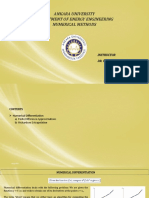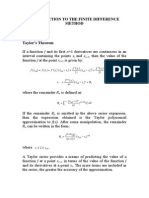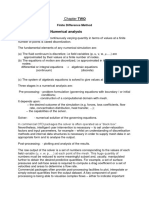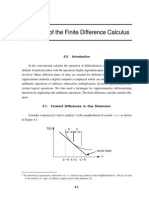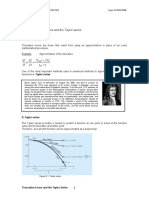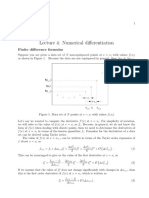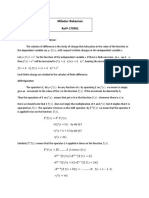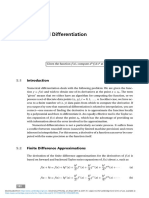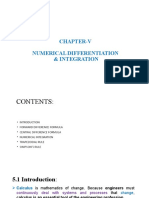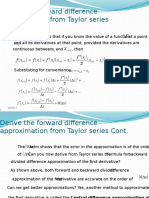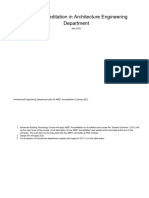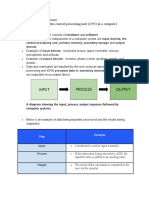0% found this document useful (0 votes)
84 views28 pagesNumerical Analysis and Methods
This document discusses numerical methods for solving problems that have no analytical solutions or are difficult to solve analytically. It covers Taylor series approximations, numerical differentiation using forward, backward and central differences, and the relationship between differences and polynomials. The key points are:
1) Numerical methods use approximations to find solutions, and error analysis is important.
2) Taylor series are the foundation as most numerical methods are derived from them, and they are used to estimate errors.
3) Numerical differentiation can be done using forward, backward, and central differences of various orders to approximate derivatives of varying accuracies.
4) Difference expressions for derivatives reduce to polynomials, so the error term involves higher order derivatives that may be zero
Uploaded by
bromikeseriesCopyright
© © All Rights Reserved
We take content rights seriously. If you suspect this is your content, claim it here.
Available Formats
Download as PPTX, PDF, TXT or read online on Scribd
0% found this document useful (0 votes)
84 views28 pagesNumerical Analysis and Methods
This document discusses numerical methods for solving problems that have no analytical solutions or are difficult to solve analytically. It covers Taylor series approximations, numerical differentiation using forward, backward and central differences, and the relationship between differences and polynomials. The key points are:
1) Numerical methods use approximations to find solutions, and error analysis is important.
2) Taylor series are the foundation as most numerical methods are derived from them, and they are used to estimate errors.
3) Numerical differentiation can be done using forward, backward, and central differences of various orders to approximate derivatives of varying accuracies.
4) Difference expressions for derivatives reduce to polynomials, so the error term involves higher order derivatives that may be zero
Uploaded by
bromikeseriesCopyright
© © All Rights Reserved
We take content rights seriously. If you suspect this is your content, claim it here.
Available Formats
Download as PPTX, PDF, TXT or read online on Scribd
/ 28


